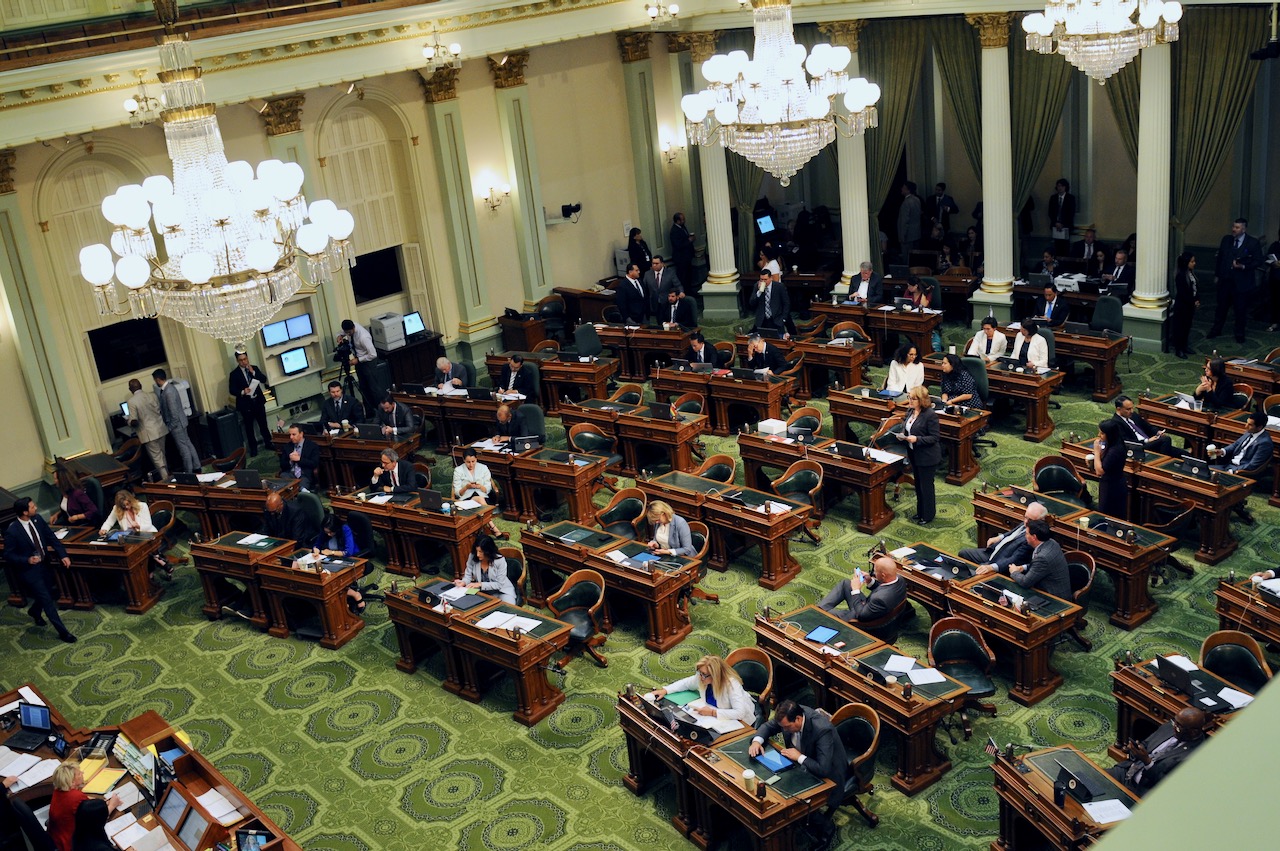
CA Assembly Chambers. (photo: Kevin Sanders for California Globe)
How to Draft a Spot Bill
A ‘spot bill’ is basically used as a placeholder for a future bill
By Chris Micheli, October 19, 2022 9:58 am
In the California Legislature, a “spot bill” is basically used as a placeholder for a future measure to be amended into the spot bill. Quite often, bills introduced in the California Legislature without substantive language in them are called “spot bills.” However, that is not always the case even though both spot and intent bills act as placeholders with substantive amendments to be added at a later date.
Spot Bills make technical changes to an existing statute. They are deemed to be nonsubstantive changes to the law. The Office of Legislative Counsel has traditionally included in its Digest a statement that reads: “This bill would make a technical, nonsubstantive change to the law.” Other Legislative Counsel deputies simply describe a spot bill as one that “would make a nonsubstantive change to the law.”
As a result, the following is an example of the Legislative Counsel’s Digest for a spot bill:
Existing law specifies that crimes and public offenses include felonies, misdemeanors, and infractions.
This bill would make technical, nonsubstantive changes to that provision.
In the above example, there is a brief sentence explaining existing law in broad terms, followed by one of the standard statements.
In the actual text of the bill, an example from the bill that was part of the above Digest, provided as a spot bill the following language:
Crimes and public offenses include: include all of the following:
1.Felonies;
2.Misdemeanors; and
3.Infractions.
(a) Felonies.
(b) Misdemeanors.
(c) Infractions.
In the example above, there would not be any substantive change to the law. Instead of the word “include,” the spot bill simply changes it to be “include all of the following.” In addition, instead of using the numbers 1-3, the spot bill uses (a)-(c). The above example reflects modern drafting practices from the Office of Legislative Counsel. No other substantive changes in the law are proposed.
Another example of a spot bill from the 2022 Legislative Session includes the following from the Legislative Counsel’s Digest:
Existing law ratifies various tribal-state gaming compacts entered into or amended in accordance with the federal Indian Gaming Regulatory Act of 1988.
This bill would make nonsubstantive changes to those provisions.
In the above example, there is a brief sentence explaining existing law in broad terms, followed by one of the standard statements.
In the actual text of the bill, an example from the bill that was part of the above Digest, provided as a spot bill the following language:
The following tribal-state gaming compacts compacts, entered into in accordance with the federal Indian Gaming Regulatory Act of 1988 (18 U.S.C. Secs. 1166 to 1168, inclusive, and 25 U.S.C. Sec. 2701 et seq.) seq.), are hereby ratified:
In the example above, there would not be any substantive change to the law. In this spot bill example, a comma is placed after two words. No other substantive changes in the law are proposed.
Other examples of spot bills include changing the word “any” to “a” or “an,” as well as moving to gender-neutral drafting, such as replacing “him or her” with “they.” Again, these are nonsubstantive changes in the law and are therefore used as “spot bills,” or placeholder measures while the substantive language planned for the bill is developed.
- Third Quiz on Where Areas of Law Are Found in the California Codes - December 30, 2025
- Management of Unclaimed Property - December 30, 2025
- Petitions and Responses in Arbitration - December 29, 2025





One thought on “How to Draft a Spot Bill”